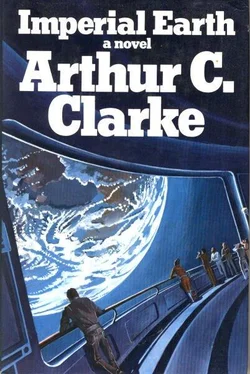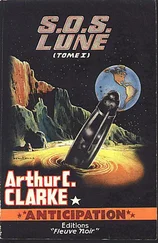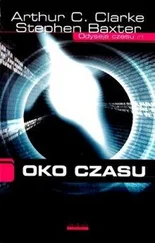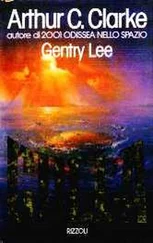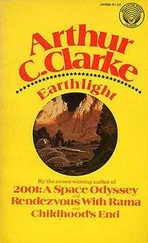Arthur Clarke - Imperial Earth
Здесь есть возможность читать онлайн «Arthur Clarke - Imperial Earth» весь текст электронной книги совершенно бесплатно (целиком полную версию без сокращений). В некоторых случаях можно слушать аудио, скачать через торрент в формате fb2 и присутствует краткое содержание. Год выпуска: 1975, ISBN: 1975, Издательство: Gollancz, Жанр: Фантастика и фэнтези, на английском языке. Описание произведения, (предисловие) а так же отзывы посетителей доступны на портале библиотеки ЛибКат.
- Название:Imperial Earth
- Автор:
- Издательство:Gollancz
- Жанр:
- Год:1975
- ISBN:0-575-02011-3
- Рейтинг книги:5 / 5. Голосов: 1
-
Избранное:Добавить в избранное
- Отзывы:
-
Ваша оценка:
- 100
- 1
- 2
- 3
- 4
- 5
Imperial Earth: краткое содержание, описание и аннотация
Предлагаем к чтению аннотацию, описание, краткое содержание или предисловие (зависит от того, что написал сам автор книги «Imperial Earth»). Если вы не нашли необходимую информацию о книге — напишите в комментариях, мы постараемся отыскать её.
Imperial Earth — читать онлайн бесплатно полную книгу (весь текст) целиком
Ниже представлен текст книги, разбитый по страницам. Система сохранения места последней прочитанной страницы, позволяет с удобством читать онлайн бесплатно книгу «Imperial Earth», без необходимости каждый раз заново искать на чём Вы остановились. Поставьте закладку, и сможете в любой момент перейти на страницу, на которой закончили чтение.
Интервал:
Закладка:
It was a noble vision, though there were some who feared its success as much as its possible failure. However, during the Time of Troubles that brought the twentieth century to its unlamented close, there was little hope of funding such a project. It could be considered only during a period of political and financial stability; and therefore CYCLOPS did not get under way until a hundred years after the initial design studies.
A child of the brief but brilliant Muslim Renaissance, it helped to absorb some of the immense wealth accumulated by the Arab countries during the Oil Age. The millions of tons of metal required came from the virtually limitless resources of the Red Sea brines, oozing up along the Great Rift Valley. Here, where the crust of the Earth was literally coming apart at the seams as the continental plates slowly separated, were metals and minerals to banish all fear of shortages for centuries to come.
Ideally, CYCLOPS should have been situated on the Equator, so that its questing radio mirrors could sweep the heavens from pole to pole. Other requirements were a good climate, freedom from earthquakes or other natural disasters—and, if possible, a ring of mountains to act as a shield against radio interference. Of course, no perfect site existed, and political, geographical, and engineering compromises had to be made. After decades of often acrimonious discussion, the desolate ‘Empty Quarter’ of Saudi Arabia was chosen; it was the first time that anyone had ever found a use for it.
Wide tracks were roughly graded through the wilderness so that ten-thousand ton hover-freighters could carry in components from the factories on the shore of the Red Sea. Later, these were supplemented by cargo airships. In the first phase of the project, sixty parabolic antennas were arranged in the form of a cross, its five-kilometer arms extending north-south, east-west. Some of the faithful objected to this symbol of an alien religion, but it was explained to them that this was only a temporary state of affairs. When the “Eye of Allah” was completed, the offending sign would be utterly lost in the total array of seven hundred huge dishes, spaced uniformly over a circle eighty square kilometers in extent.
By the end of the twenty-first century, however, only half of the planned seven hundred elements had been installed. Two hundred of them had filled in most of the central core of the array, and the rest formed a kind of picket fence, outlining the circumference of the giant instrument. This reduction in scale, while saving billions of solars, had degraded performance only slightly. CYCLOPS had fulfilled virtually all its design objectives, and during the course of the twenty-second century had wrought almost as great a revolution in astronomy as had the reflectors on Mount Wilson and Mount Palomar, two hundred years earlier. By the end of that century, however, it had run into trouble—through no fault of its builders, or of the army of engineers and scientists who served it.
CYCLOPS could not compete with the systems that had now been built on the far side of the Moon—almost perfectly shielded from terrestrial influence by three thousand kilometers of solid rock. For many decades, it had worked in conjunction with them, for two great telescopes at either end of an Earth-Moon baseline formed an interferometer that could probe details of planetary systems hundreds of light-years away. But now there were radio telescopes on Mars; the Lunar observatory could achieve far more with their co-operation than it could ever do with nearby Earth. A baseline two hundred million kilometers long allowed one to survey the surrounding stars with a precision never before imagined.
As happens sooner or later with all scientific instruments, technical developments had by-passed CYCLOPS. But by the mid-twenty-third century it was facing another problem, which might well prove fatal. The Empty Quarter was no longer a desert .
CYCLOPS had been built in a region which might see no rains for five years at a time. At Al Hadidah, there were meteorites that had lain untrusting in the sand since the days of the Prophet. All this had been changed by reforestation and climate control; for the first time since the Ice Ages, the deserts were in retreat. More rain now fell on the Empty Quarter in days than had once fallen in years.
The makers of CYCLOPS had never anticipated this. They had, reasonably enough, based all their designs on a hot, arid environment. Now the maintenance staff was engaged in a continual battle against corrosion, humidity in coaxial cables, fungus-induced breakdowns in high-tension circuits, and all the other ills that afflict electronic equipment if given the slightest chance. Some of the hundred-meter antennas had even rusted up solidly, so that they could no longer be moved and had to be taken out of service. For almost twenty years, the system had been working at slowly decreasing efficiency, while the engineers, administrators, and scientists carried out a triangular argument, no one party being able to convince either of the others. Was it worth investing billions of solars to refurbish the system—or would the money be better spent on the other side of the Moon? It was impossible to arrive at any clear-cut decision, for no one had ever been able to put a value on pure scientific research.
Whatever its present problems, CYCLOPS had been a spectacular success, helping reshape man’s views on the universe not once, but many times. It had pushed back the frontiers of knowledge to the very microsecond after the Big Bang itself, and had trapped radio waves that had circumnavigated the entire span of creation. It had probed the surfaces of distant stars, detected their hidden planets, and discovered such strange entities as neutrino suns, antitachyons, gravitational lenses, spacequakes, and revealed the mind-wrenching realms of negative-probability “Ghost” states and inverted matter.
But there was one thing that it had not done. Despite scores of false alarms, it had never succeeded in detecting signals from intelligent beings somewhere else in the universe.
Either man was alone, or nobody else was using radio transmitters. The two explanations seemed equally improbable.
37. Meeting At CYCLOPS
He had known what to expect, or so he had believed, but the reality was still overwhelming. Duncan felt like a child in a forest of giant metal trees, extending in every direction to the limit of vision. Each of the identical ‘trees’ had a slightly tapering trunk fifty meters high, with a stairway spiraling round it up to the platform supporting the drive mechanism. Looming above this was the huge yet surprisingly delicate hundred-meter-wide bowl of the antenna itself, tilted toward the sky as it listened for signals from the deeps of space.
Antenna 005, as its number indicated, was near the center of the array, but it was impossible to tell this by visual inspection. Whichever way Duncan looked, the ranks and columns of steel towers dwindled into the distance until eventually they formed a solid wall of metal.
The whole vast array was a miracle of precision engineering, on a scale matched nowhere else on Earth. It was altogether appropriate that many key components had been manufactured in space; the foamed metals and crystal fibers which gave the parabolic reflectors strength with lightness could be produced only by the zero-gravity orbiting factories. In more ways than one, CYCLOPS was a child of space.
Duncan turned to the guide who had driven him through the labyrinth of access tunnels on the small, chemically powered scooter.
“I don’t see anyone,” he complained. “Are you sure he’s here?”
“This is where we left him, an hour ago. He’ll be in the pre-amplifier assembly, up there on the platform. You’ll have to shout—no radios allowed here , of course.”
Читать дальшеИнтервал:
Закладка:
Похожие книги на «Imperial Earth»
Представляем Вашему вниманию похожие книги на «Imperial Earth» списком для выбора. Мы отобрали схожую по названию и смыслу литературу в надежде предоставить читателям больше вариантов отыскать новые, интересные, ещё непрочитанные произведения.
Обсуждение, отзывы о книге «Imperial Earth» и просто собственные мнения читателей. Оставьте ваши комментарии, напишите, что Вы думаете о произведении, его смысле или главных героях. Укажите что конкретно понравилось, а что нет, и почему Вы так считаете.
